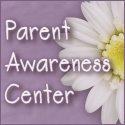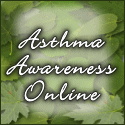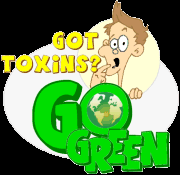5 Tips for "Going Green" in Mind, Body, and Spirit ...
Posted by David Romanelli
The push toward green living is hitting the mainstream. We are recycling waste, eating organic, and buying free-trade. We are at least acknowledging our addiction to oil and starting to take steps toward more sustainable living. But the outside is a reflection of the inside. And to truly "go green" is a statement of union with the world on the outside and the world on the inside. You protect trees, skies, and seas -- but you also protect the mind, body, and spirit.
Here are some tips on going green that you might not see in your local paper:
1. Protect the present moment.
Just 20 years ago, people smoked on airplanes, cars spewed dirty exhaust, and people didn't think twice before dropping a soda can on the street. Now, if you did any of the above, you’d probably hear people hootin' and hollerin'! But the fact is that we pollute the present moment the way we used to pollute the environment. We answer the cell phone while engaged in conversation with someone in the same room. We return emails while ordering coffee at Starbucks. We drive while sending a text message.
The present moment is the arena where life happens. In other words, all you remember in life are moments. If the moment is uncomfortable and filled with obstructions, you'll never have deep and moving life experiences. If you really want to go green, respect the colleague with whom you are speaking. Give them your undivided attention. Respect the human being from whom you are ordering your coffee. Turn off your cell phone. Respect the woman crossing the street with her baby in the stroller. Be wary of driving and texting. Have dignity for the present moment.
2. Embrace the energy of stillness.
Just as solar power and biodiesel are slowly reducing our consumption of oil, the sustainable energy of stillness can diminish the use of force. We learn in popular culture that giving 100%, training like an Olympian, and studying your whole life will bring you success. The ancient Eastern cultures have a different approach. They believe that if you carve out moments in your day where you quiet the mind and body, you tap a deeper form of strength. This power of presence is often referred to as "shakti."
Maybe it's not realistic for you to suddenly become still in life. But you can learn to create sacred moments every single day. Try it. Right smack in the middle of your day, lie down, put on a relaxing song, quiet the mind, and quiet your vibration. You will be more alluring, more attractive, more attentive. But most importantly, you will be strong in the ways of spirit.
3. Tap your brain's potential.
A human being can utilize a mostly untapped and "clean source of power" from their very own brain. According to The Einstein Factor by Win Wenger and Richard Poe, the human brain can store up to 280,000,000,000,000,000,000 bits of memory. And estimates of the brain's speed of operation have ranged from 100 to 100,000 teraflops (a teraflop is 1 trillion flops, the standard measure of computing speed). In comparison, the world's fastest supercomputer operates at only 100 billion flops.
So yes, a human being has awesome computing power. Yet we search far and wide for education, knowledge, answers. But remember -- you've got to stop the car before you can get in and drive. Through meditation and stillness, learn to quiet the mind so that you can tap the greatest computer of all … your very own brain!
4. Work smart.
Once you understand that the brain has tremendous power, just give it a direction and a destination and the brain will take you where you want to go. Usually, the brain is like a racehorse we can't seem to harness. Every little stimulation lures the brain in one direction or another. By harnessing and quieting the brain, you recognize that "your action is meant to be a way to enjoy what you created through thought. If you do not take the time to line up your thoughts, there is not enough action in the world to compensate for that misalignment," according to The Law of Attraction by Ester and Jerry Hicks. The point? Don’t work hard, work smart!
5. Harness the wind, ride the current, and surf the wave.
There is a natural "current" described throughout the ancient Eastern spiritual arts. The yogis call it prana, the Chinese call it chi. Some refer to it as a wind, the breath, the sea. When a great song's melody sweeps your mind up and away, that is the current. When you dip into a sweet Savasana's magical ascent, that is the current. When the perfect plate of penne amatriciana brings your taste buds into an ecstatic joyride, that is the current. By riding this current, you are swept into opportunity, synchronicity, and happiness. By not taking time to enjoy life, you resist the current and, no matter how hard you work, there's always a sense of struggle.
So quiet the mind, still the body, live in the moment -- and go green!
Wednesday, April 25, 2007
Saturday, April 21, 2007
Why We Should Worry
According to the EPA, most homes have airborne concentrations of hazardous chemicals that are two to five times higher indoors than outdoors.
According to the EPA, toxic chemicals found in the home are three times more likely to cause cancer than outdoor airborne pollutants.
The Consumer Product Safety Commission connects 150 chemicals commonly found in our homes to allergies, birth defects, cancer and psychological disorders.
The National Cancer Institute has a list of twenty known carcinogens and over 2,200 chemicals that are probable carcinogens. Many of these chemicals are in the cleaners and personal care products you buy at your local grocery store.
What can you do?
There are many safe products on the market... all you have to do is change brands of products.
Think about what you can do:
According to the EPA, toxic chemicals found in the home are three times more likely to cause cancer than outdoor airborne pollutants.
The Consumer Product Safety Commission connects 150 chemicals commonly found in our homes to allergies, birth defects, cancer and psychological disorders.
The National Cancer Institute has a list of twenty known carcinogens and over 2,200 chemicals that are probable carcinogens. Many of these chemicals are in the cleaners and personal care products you buy at your local grocery store.
What can you do?
There are many safe products on the market... all you have to do is change brands of products.
Think about what you can do:
Monday, April 16, 2007
Sunday, April 15, 2007
Toxins in Your Home
A toxic substance means any chemical or mixture that may be harmful to the environment and to human health if inhaled, swallowed, or absorbed through the skin.
Did you know that some toxic substances are found in nature? There are naturally occurring toxins (poisonous substances coming from living organisms) found in certain plants like poinsettias and even some wild mushrooms and berries. However, the toxic substances contained in most everyday household products are synthetic which means they are man-made.
The opposite of toxic substances are called non-toxic substances. Non-toxic substances are safe to use, and do not harm humans and the environment.Many of the products you find in your home may have toxic substances.
These products include:
drain cleaners;
oven cleaners;
laundry detergents;
floor or furniture polish;
paints, and pesticides
While these products are useful at home, some of the chemicals in these products can irritate your skin, eyes, nose and throat, or can even poison you - so be careful! Kids, you must think about the products you use at home - are they toxic?
If they are, be careful when you use them. If you are unsure, please check with an adult before you use them.
Source: Environmental Protection Agency
Did you know that some toxic substances are found in nature? There are naturally occurring toxins (poisonous substances coming from living organisms) found in certain plants like poinsettias and even some wild mushrooms and berries. However, the toxic substances contained in most everyday household products are synthetic which means they are man-made.
The opposite of toxic substances are called non-toxic substances. Non-toxic substances are safe to use, and do not harm humans and the environment.Many of the products you find in your home may have toxic substances.
These products include:
drain cleaners;
oven cleaners;
laundry detergents;
floor or furniture polish;
paints, and pesticides
While these products are useful at home, some of the chemicals in these products can irritate your skin, eyes, nose and throat, or can even poison you - so be careful! Kids, you must think about the products you use at home - are they toxic?
If they are, be careful when you use them. If you are unsure, please check with an adult before you use them.
Source: Environmental Protection Agency
GO Green in April Earth Month
Everyday household cleaners that can make cleaning faster and perhaps simpler, are full of chemicals. These chemicals have their costs. Many give off unhealthy fumes that can irritate the eyes, nose and lungs. Some cleaners are corrosive and can harm your skin. Many contain ingredients that are suspected of causing cancer.
Many cleaners can leave behind chemical residues. Children tend to touch everything and then put their hands in their mouths or pick up food dropped on the floor. They may be putting chemicals in their mouths along with their toys and food. Small amounts may not be immediately harmful but can accumulate to cause health problems over time.
As a parent, you are right to be concerned about the kinds of cleaning products used in your child's day care or schools. Cleaning products contribute to the contamination of indoor air, especially those containing solvents, perfumes or other irritating or harmful chemicals. Chlorine bleach can be irritating to the airways, especially to young children.
Given the need to protect children in day care programs from disease, it is also important that the facility is cleaned well.
Because germ-killing products, or antimicrobials, are considered pesticides, all disinfectants sold in the United States must be registered with the U.S. Environmental Protection Agency. In terms of regulation, antimicrobial pesticides differ from pesticides used to kill insects and weeds: Disinfectants, for example, must be shown to be effective in killing disease-causing bacteria.
Note that there are two types of disinfectants: hospital disinfectants and general use disinfectants. In addition, sanitizers are used to reduce microbes to safe levels. However, they are not required to eliminate them.
EPA registration doesn't guarantee that the product kills germs. Many EPA-registered antimicrobial products are registered because they kill algae, odor-causing bacteria, bacteria that causes spoilage or deterioration, and microbes that are infectious only to animals.
For that reason, you should read the label carefully and contact the manufacturer. The manufacturer should be able to provide you with data on the kinds of disease-killing microbes the disinfectant kills and its level of efficacy. You should be able to find a customer service number on the product label or on the company's Web site.
If you want to hear more by attending a free online workshop on how you can change to safer and more effective products in your home, contact Marcia at GoingGreen@earthlink.net and say you want to attend a GO GREEN workshop.
Many cleaners can leave behind chemical residues. Children tend to touch everything and then put their hands in their mouths or pick up food dropped on the floor. They may be putting chemicals in their mouths along with their toys and food. Small amounts may not be immediately harmful but can accumulate to cause health problems over time.
As a parent, you are right to be concerned about the kinds of cleaning products used in your child's day care or schools. Cleaning products contribute to the contamination of indoor air, especially those containing solvents, perfumes or other irritating or harmful chemicals. Chlorine bleach can be irritating to the airways, especially to young children.
Given the need to protect children in day care programs from disease, it is also important that the facility is cleaned well.
Because germ-killing products, or antimicrobials, are considered pesticides, all disinfectants sold in the United States must be registered with the U.S. Environmental Protection Agency. In terms of regulation, antimicrobial pesticides differ from pesticides used to kill insects and weeds: Disinfectants, for example, must be shown to be effective in killing disease-causing bacteria.
Note that there are two types of disinfectants: hospital disinfectants and general use disinfectants. In addition, sanitizers are used to reduce microbes to safe levels. However, they are not required to eliminate them.
EPA registration doesn't guarantee that the product kills germs. Many EPA-registered antimicrobial products are registered because they kill algae, odor-causing bacteria, bacteria that causes spoilage or deterioration, and microbes that are infectious only to animals.
For that reason, you should read the label carefully and contact the manufacturer. The manufacturer should be able to provide you with data on the kinds of disease-killing microbes the disinfectant kills and its level of efficacy. You should be able to find a customer service number on the product label or on the company's Web site.
If you want to hear more by attending a free online workshop on how you can change to safer and more effective products in your home, contact Marcia at GoingGreen@earthlink.net and say you want to attend a GO GREEN workshop.
Subscribe to:
Comments (Atom)




